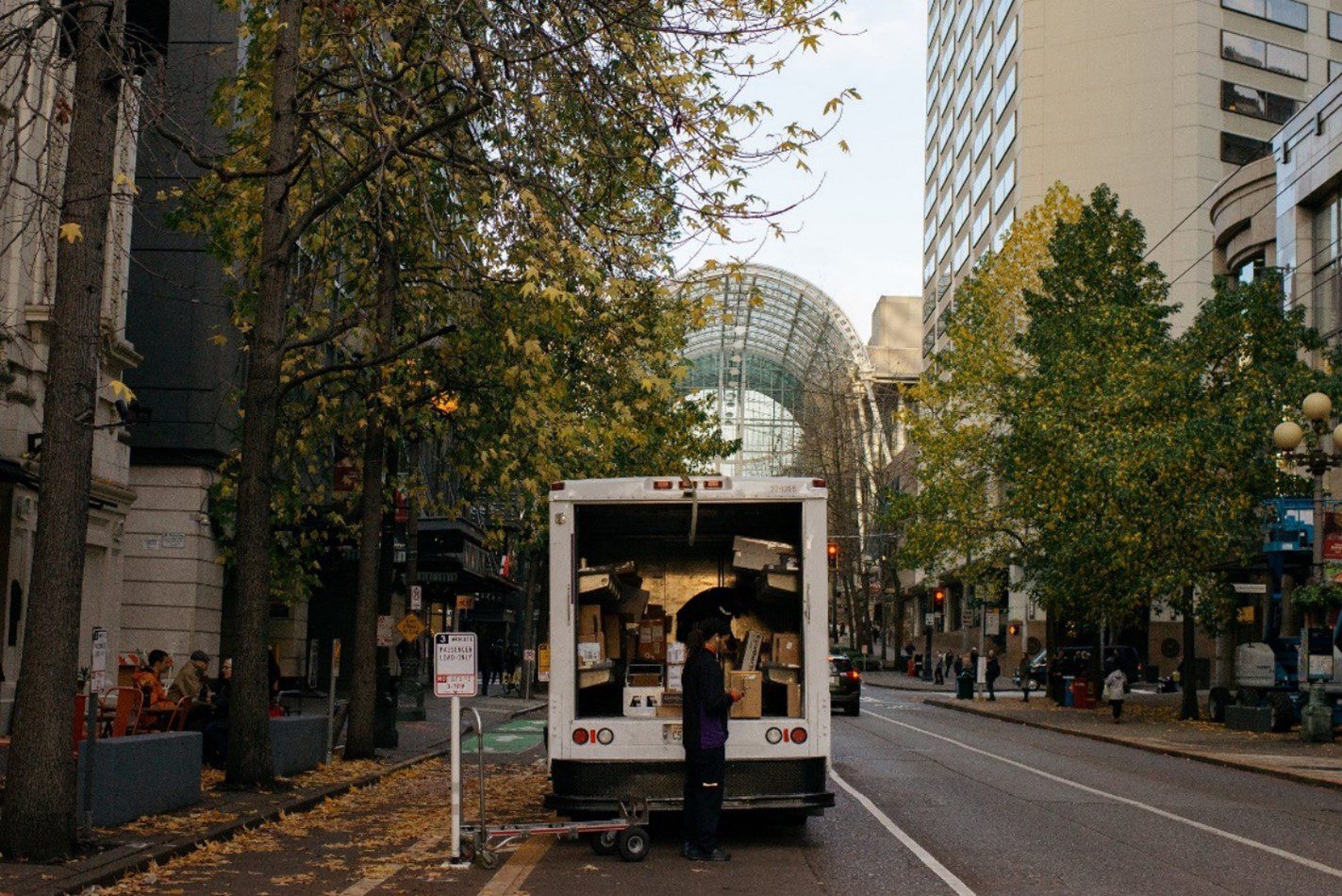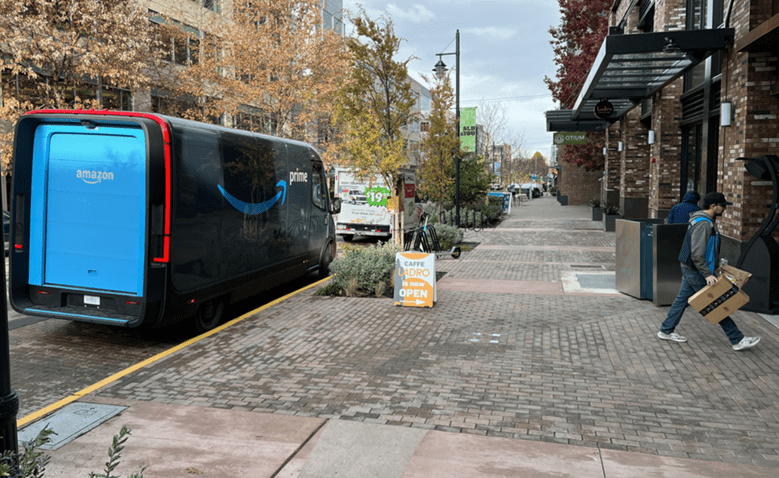 Wrapped gifts ready to be opened. Photo credit: Mel Poole via Unsplash.com.
Wrapped gifts ready to be opened. Photo credit: Mel Poole via Unsplash.com. Blog stats: 900 words | 4-minute read
At-a-glance:
- It’s the holidays, and many people are planning gifts for family and friends.
- Freight provides a vital role in getting goods to people and businesses all over Seattle.
- This blog highlights a few ways you can consider making small adjustments that can add up to real reductions in carbon emissions, as we continue working together to address climate change.
- You can also learn more about our efforts to pursue more sustainable use of the public curb space throughout Seattle today and in the future.
- Happy Holidays to you and your family!
The holiday season can be a fun, festive time full of activities with family and friends, shopping, and of course traveling on busy streets. Freight and goods travel on those same streets with vehicles making deliveries to Seattleites’ homes and businesses all across the city.
Please consider some of the ideas below to help make your shopping more environmentally friendly as we work to reduce carbon emissions and address climate change here in Seattle and beyond.
Tips for more sustainable shopping and shipping
These tips can be applied when making online purchases, specifically to your home or business:
- Plan ahead to avoid opting for expedited delivery services. This will help mitigate truck congestion in your neighborhood.
- Consolidate your orders. Delivering multiple packages to the same location at the same time improves efficiency and reduces the number of truck trips in your neighborhood.
- Use local collection points or package lockers to make ordering online goods accessible in one location, therefore limiting the number of stops a truck might make to conduct deliveries.
- Give the gift of experiences instead of a physical gift. Examples include event tickets, a camping trip, wine tasting, cooking classes, baby-sitting, or subscription services.
- Shop local and support small businesses. If they don’t have the item you need, see if they can order it for you!
- Create Do-It-Yourself (DIY) gifts, such as arts and crafts, baked goods, or a poem.
- Pick up in-store/curb-side pickup when possible! (Tip: some companies provide an additional discount for pickup orders or same-day service).
- Re-use packaging to offset household waste and reduce the carbon footprint of transporting waste.
- Opt for or request sustainable packaging when possible, to offset non-recyclable packing waste.
Thank you to our counterparts at the New York City Department of Transportation (NYC DOT) Freight Mobility Unit for helping develop these tips.

Here’s what we’re doing to manage limited public space for deliveries
Vehicle load zones
- We at SDOT are responsible for managing and installing vehicle load zones throughout Seattle.
- These are important spaces along the curbs to allow people reliable access to load and unload, and also allow freight and commercial vehicles to deliver their goods in a safe and timely way.
- With Seattle’s growth in recent years, demand for these spaces has increased, and we’re working hard to make these spaces work efficiently while reducing the need to circle the block, whenever possible.
- You can read more on our website.
Upgrading commercial vehicle load zone permit program
- In fall 2022, we applied for a $2 million federal “SMART” grant to extend our data-driven approach to commercial vehicle load zones and commercial vehicle permits.
- Our goal is to make the most efficient use of limited curb space in the city, including by adopting the latest industry data standard, known as the Curb Data Specification (CDS).
- We successfully won the grant alongside partners at the University of Washington Urban Freight Lab and the Open Mobility Foundation.
- You can read more about this effort in our previous blog post.

Supporting zero-emission freight and electric cargo bike deliveries in Seattle
- To better understand how to advance freight decarbonization, we partnered with C40 Cities and Walker Consultants to conduct a study exploring opportunities to implement zero-emission loading zones and enable e-cargo bike delivery in Seattle.
- Through stakeholder outreach, research, interviews with peer cities, and data collection, we have identified policy, administration, and engagement considerations to begin implementation.
- Initial stakeholder outreach revealed that the Seattle business community is interested in and excited to move towards zero-emission options but may need program assistance from the City.
- You can read more about zero-emission freight and e-cargo bike deliveries in our previous blog post.
We plan to have more conversations with businesses about how delivery and load zones are working for them, and our efforts to support electrification and sustainability in this area. If you are a business owner or freight representative with questions or suggestions, you can contact SDOT’s Katherine Rice at Katherine.rice@seattle.gov.

Thank you for your interest and Happy Holidays!
We appreciate you taking the time to consider these efforts in your holiday traditions, and hope this information was useful and relevant as you shop, ship, and celebrate in the weeks ahead. Thank you.